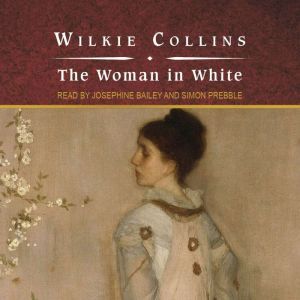

The Woman in White
Author: Wilkie Collins
Narrator: Josephine Bailey, Simon Prebble
Unabridged: 25 hr 7 min
Format: Digital Audiobook Download
Publisher: Tantor Media
Published: 12/14/2010
Includes:
Bonus Material
![]()
Synopsis
The story begins with an eerie midnight encounter between artist Walter Hartright and a ghostly woman dressed all in white who seems desperate to share a dark secret. The next day Hartright, engaged as a drawing master to the beautiful Laura Fairlie and her half sister, tells his pupils about the strange events of the previous evening. Determined to learn all they can about the mysterious woman in white, the three soon find themselves drawn into a chilling vortex of crime, poison, kidnapping, and international intrigue.
Masterfully constructed, The Woman in White is dominated by two of the finest creations in all Victorian fiction—Marion Halcombe, dark, mannish, yet irresistibly fascinating, and Count Fosco, the sinister and flamboyant "Napoleon of Crime."


